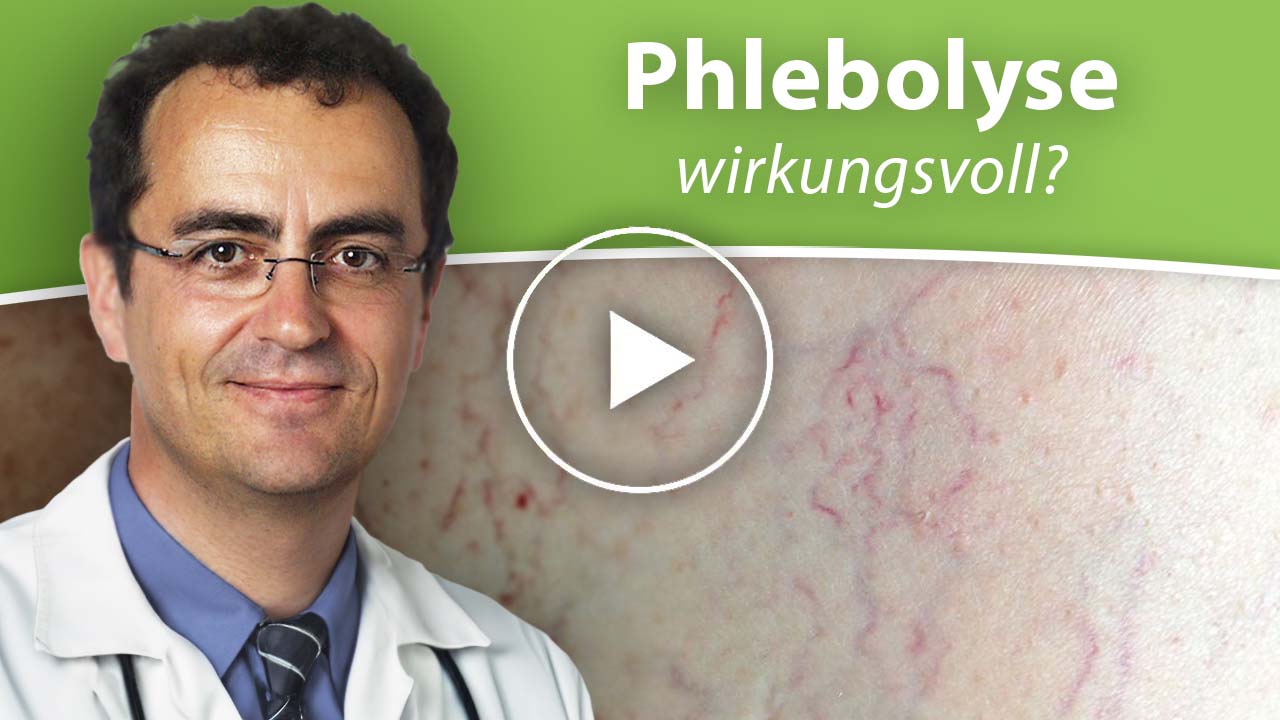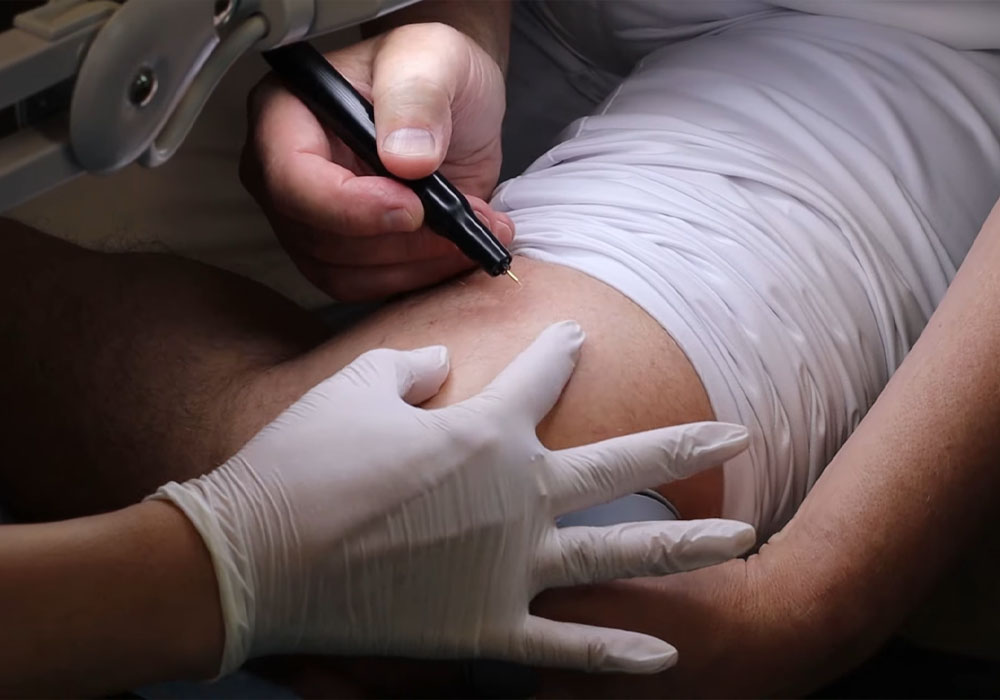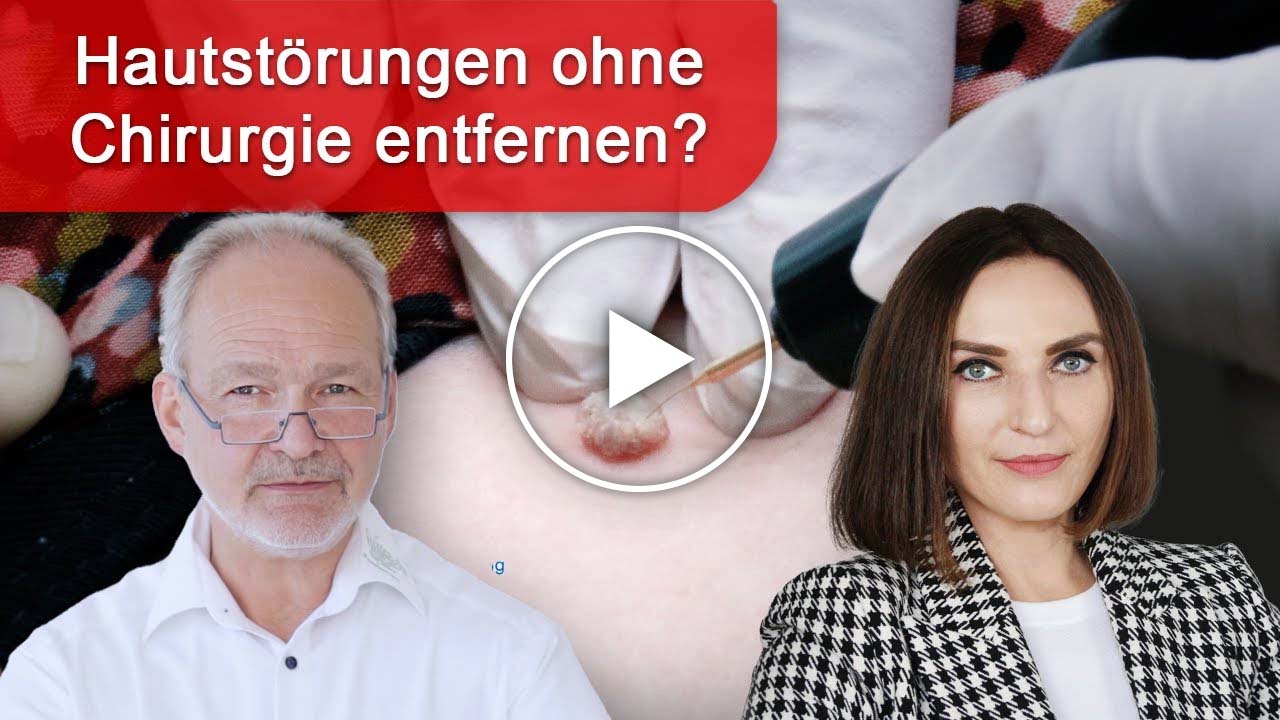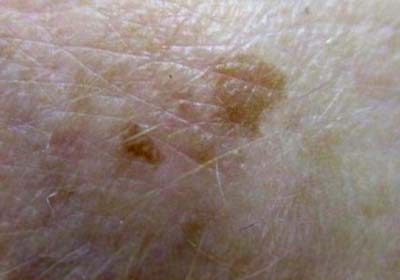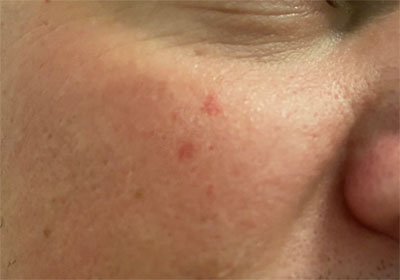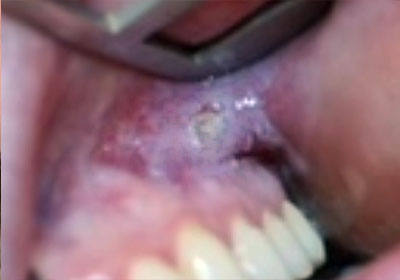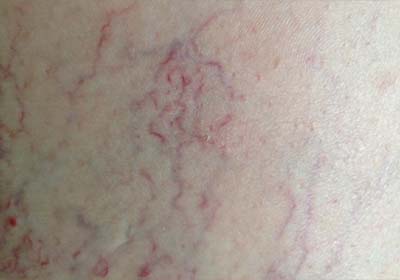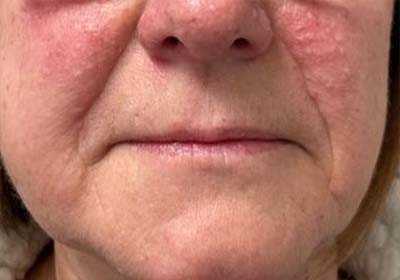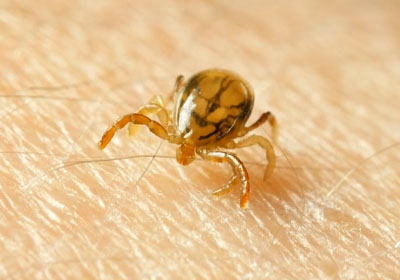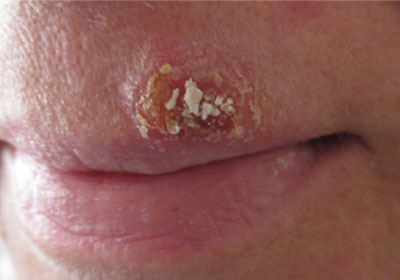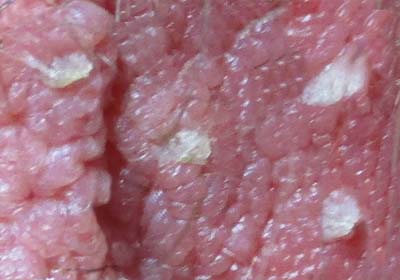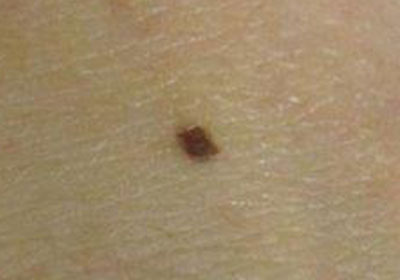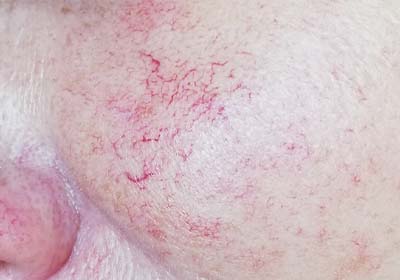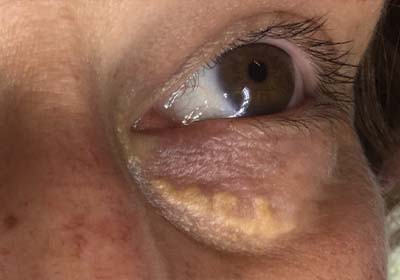Spider veins
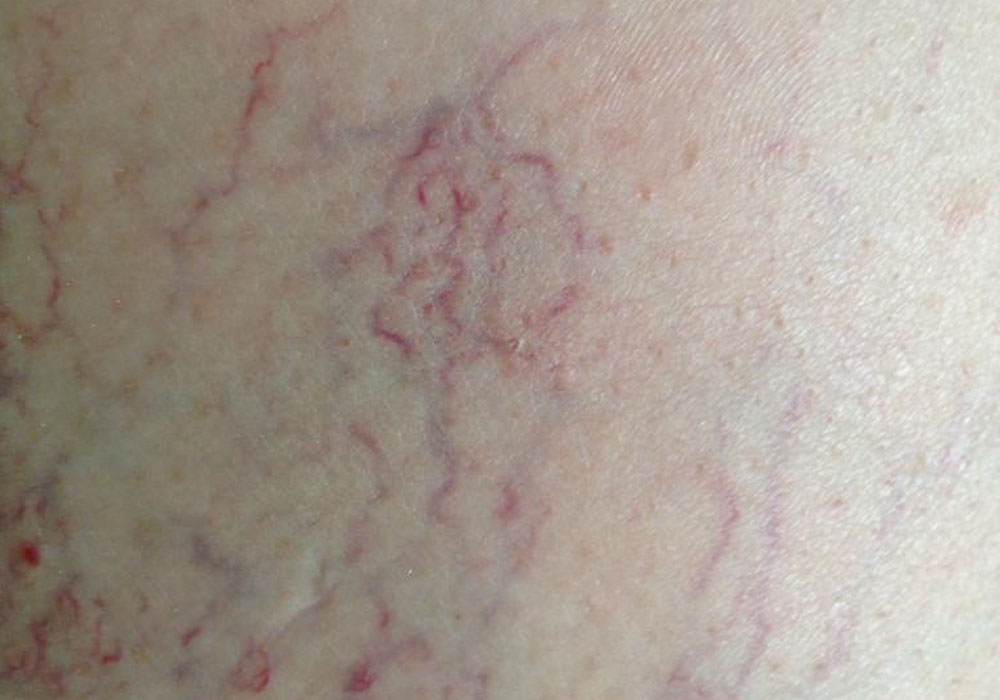
Image from ongoing user study
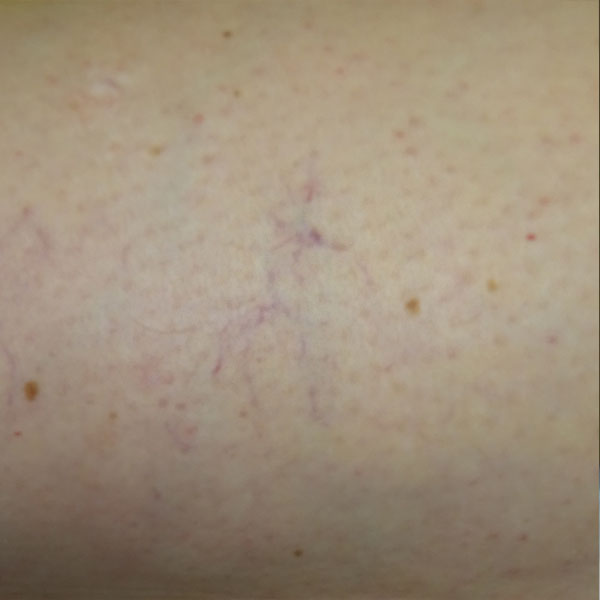
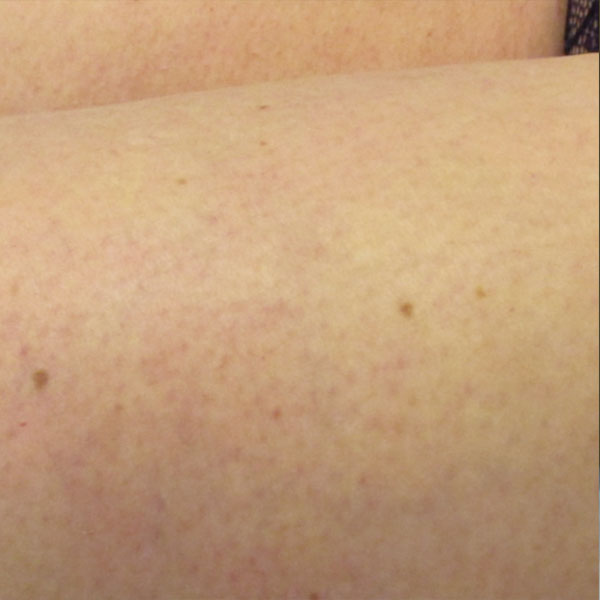
Images from ongoing user study. Single case report of a patient with spider veins on the right thigh.
Picture 1 from July 17.02.2021th, XNUMX, Picture 2 from July 15.03.2021, XNUMX.
No conclusions can be drawn about the success of other treatments from this individual treatment case.
Definition and origin of spider veins
Spider veins are small, web-like lines on the skin, often seen on the legs, that resemble the bristles of a broomstick. They can shimmer reddish, violet or bluish and are often perceived as a cosmetic problem.
The development of spider veins is favored by a weakness in the connective tissue, which causes the vein walls to wear out over the course of life. This weakens the venous valves, which can lead to stagnation of blood in the veins.
Difference between spider veins and varicose veins?
The difference to varicose veins is the size of the affected blood vessels - varicose veins tend to define larger blood vessels that show a different picture with the same pathophysiology. In most cases, varicose veins already show lumpy bulges of vessels, which do not occur in spider veins.
In particular, people whose parents already had spider veins are more likely to be affected themselves. However, other risk factors such as sitting or standing for the most part, smoking, alcohol consumption, high blood pressure or taking blood-thinning medication can also promote the development and aggravation of spider veins.
Dr. med. Karl-Heinz Vogler in conversation with Andreas Oehme about the treatment of spider veins with phlebolysis
The phlebological group practice of Dr. med. Karl-Heinz Vogler in Dornstadt initially used phlebolysis mainly to treat spider veins - it was crucial to treat the very fine, superficial spider veins and not the larger, deeper varicose veins in order to achieve the best possible result.
Meanwhile, Dr. med. Karl-Heinz Vogler also has other indications, such as fibromas or moles, in his practice.
Additional short lecture by Dr. med. Karl-Heinz Vogler on phlebolysis in spider veins
The correct diagnosis and treatment of spider veins is particularly important in order not to achieve frustrating results with varicose veins.
Dr. Vogler mainly uses sclerotherapy to treat varicose veins and supplements with phlebolysis the treatment of spider veins, which often accompany the symptoms of varicose veins.
Common methods of removing spider veins:
Medicinal sclerotherapy
(sclerotherapy) with Aethoxysklerol
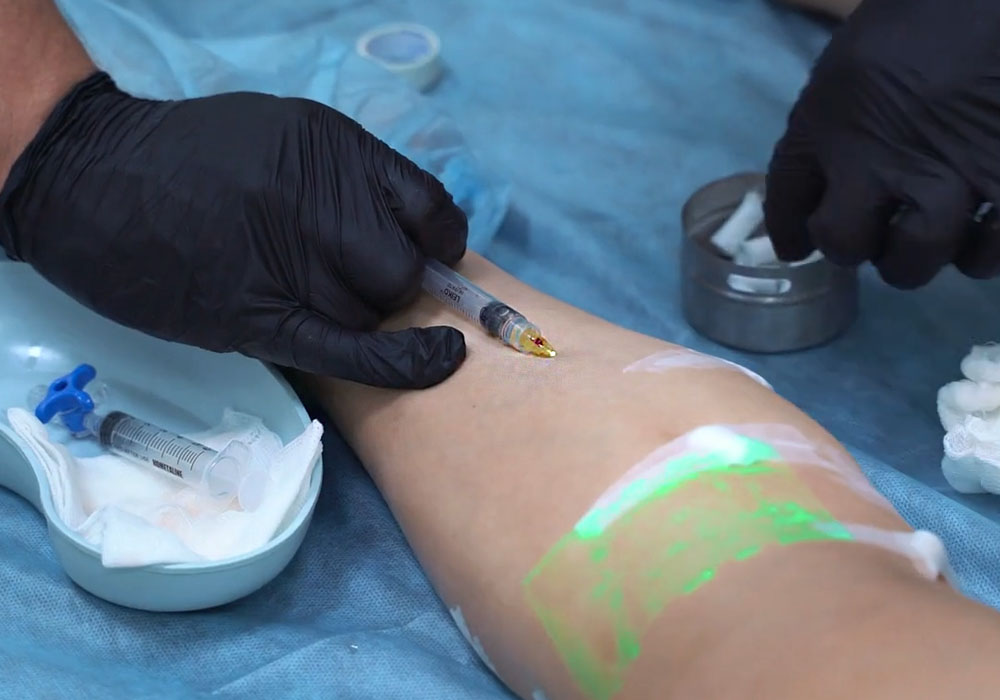
In this method, the chemical active ingredient aethoxysclerol is injected into the affected veins, causing them to stick together and then be broken down by the body. The drug is usually introduced into the affected veins via a needle in a few sessions. After removal, a compression bandage must be worn for several days to ensure optimal healing.
The most common side effects include temporary pain, redness, and swelling in the treated area, which usually goes away on its own within a few hours to days. In rare cases, bleeding, infection, allergies or hyperpigmentation (dark discoloration of the skin) can occur.
laser treatment
(blood vessel laser)
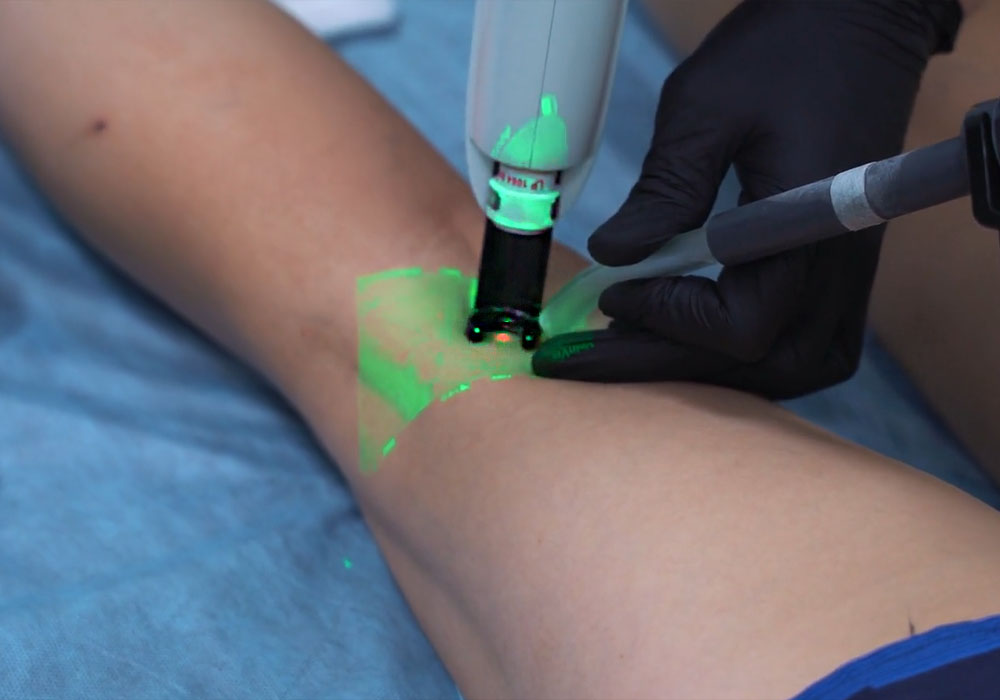
In laser therapy, a large amount of energy is bundled and directed at the affected area of skin. The laser energy is absorbed by the hemoglobin contained in the red blood cells, causing the affected blood vessels to heat up and occlude.
The main possible side effects are pain, redness and swelling in the treated area, but these usually disappear within a few days. In rare cases, burns and crusting of the surrounding tissue can also occur - scarring is also possible, but rare.
Treatment with phlebolysis:
Phlebolysis is a minimally invasive treatment that uses a cold needle to cauterize small blood vessels. Here, electrolysis is combined with radio frequency to generate enough energy to close the vessel while sparing surrounding tissue.
The physical process of sclerosing occurs in the vessel by causing the water molecules in the blood to oscillate. As a result, they heat up and denature the vessel from the inside. The treatment is usually a bit uncomfortable but not painful and does not require anesthesia. Although many treatment protocols are documented, scarring or other side effects are not known.
However, sustainable treatment requires not only the removal of the skin disorder, but also the treatment of possible metabolic disorders that are the cause of the skin disorder. Treatment with phlebolysis therefore does not rule out a recurrence of the skin disorder - if spider veins occur frequently, it is generally advisable to speak to a holistic therapist about possible causes.
Excerpt from the interview with dr medical Dirk Wiechert.
Advantages of phlebolysis treatment:
- no anesthesia
- Scar formation not known
- gentle and painless method
- immediately visible reaction
- applicable to any skin
- Burns impossible because the tool is cold
- no bleeding
- no risk of infection
- Patient is in no way restricted after treatment
In this Contribution by Dr. medical Dirk Wiechert, general practitioner in Bremen, also treats spider veins.


